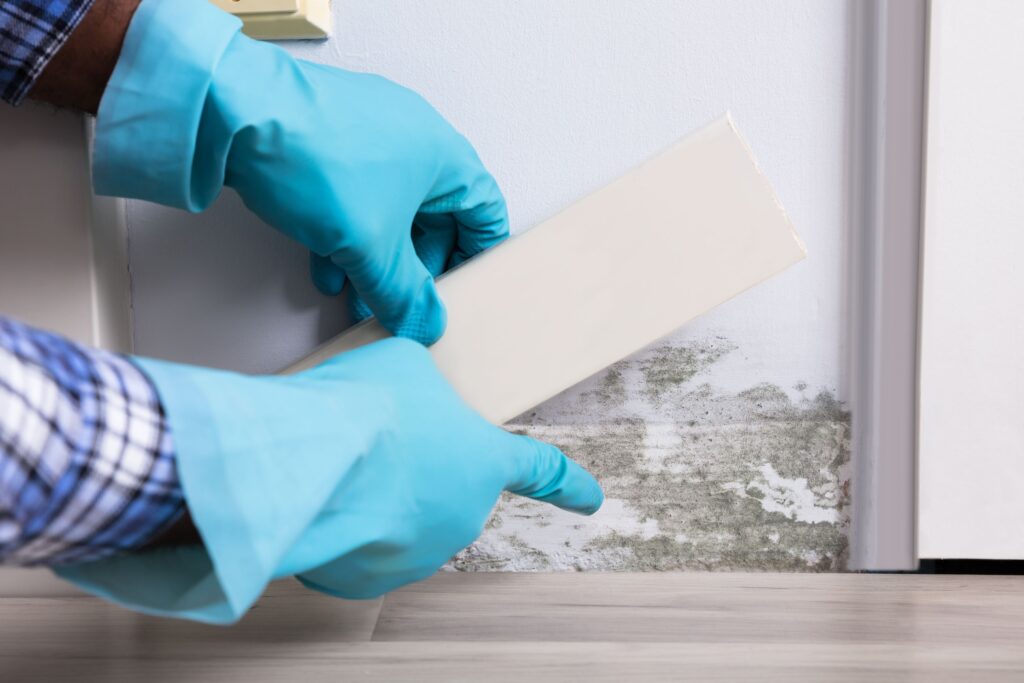Mold growth in your home can cause damage to any surface in addition to creating health hazards for members of your household. Since we know that mold grows in humid, moist areas, it’s especially important to watch for mold in your kitchen. Here are a few common places in your kitchen where mold can grow, along with a variety of mold removal solutions.
Check Your Sponge
You probably don’t give much thought to your sponge, thinking the frequent exposure to dish detergent keeps it clean. In truth, sponges collect bacteria from every surface they touch. The damp and porous nature of a sponge makes it an ideal place for hidden mold growth.
Fortunately, you can eliminate mold growth on your sponge before you require SERVPRO’s mold remediation services. If you have a dishwasher, place your sponge in the appliance and run it on the heated dry cycle once per day. You should also replace your sponge every two weeks.
Prevent Mold in Your Dishwasher
As you run your dishwasher, heat and water combine to create the perfect breeding ground for mold. You can easily prevent mold growth in your dishwasher by keeping the door open for an hour or longer after each use. This will encourage faster drying and air circulation to eliminate the humid climate in the appliance.
If you find mold growth in your dishwasher, learning the difference between mold removal and remediation can help you choose the best course of action. Catching mold growth early enough can help you eliminate it without having to get rid of the appliance.
Look Under Your Kitchen Sink
You should take a peek at the area beneath your kitchen sink on a regular basis. There might be a leak that has gone unnoticed. In addition to fixing the leak, check for mold growth. If you catch it early enough, you can wash it away with warm water and soap. Afterward, wipe the surfaces down with chlorine bleach and water to disinfect the area.
If you find black mold under your sink, contact SERVPRO for professional remediation services. In the meantime, keep the cabinet doors closed and avoid touching the surfaces. Wear gloves and an N95 respirator if you do need to access the area.
Prevent Mold Growth Under Your Refrigerator
A neglected part of your home is probably the refrigerator drip pan. As you learn more about mold, you’ll become more aware of the dark, wet, humid atmosphere in the area under this appliance. This is a perfect hiding place for mold to thrive.
Once every six months, you should empty the drip pan. After washing the pan with warm water and detergent, use a mixture of equal parts white vinegar and water to disinfect it. Thoroughly dry the pan before putting it back.
Look in Your Vegetable Crisper
Even though the inside of your refrigerator is cool and dry, there are other factors that can encourage mold growth. In particular, check the drawers at the bottom of the refrigerator. Aging vegetables and fruit can become moldy once they start to get overripe. Even if you remove moldy food, traces of mold can get left behind.
To combat mold growth in this part of your refrigerator, remove the drawers every two weeks and thoroughly wash them. Use a mixture of one tablespoon of baking soda and one cup of warm water to disinfect the drawers before drying them thoroughly.
Take Care of Your Pantry
You can prevent mold growth in your pantry by keeping up with the expiration dates on dry food. Make sure to get rid of expired food on time. It also helps to wipe down the walls and shelves in your pantry with soapy, warm water or a mixture of vinegar and water. If you’re using a disinfecting spray, make sure it’s food-safe.
Have You Checked Your Kitchen Lately?
If your home generally feels cool and dry, you should inspect the kitchen for mold once or twice per year. However, a home that feels humid needs more frequent inspections. Keeping up with inspections will help you spot mold in the early stages of growth, and that will make it easier to get rid of this hazard.








